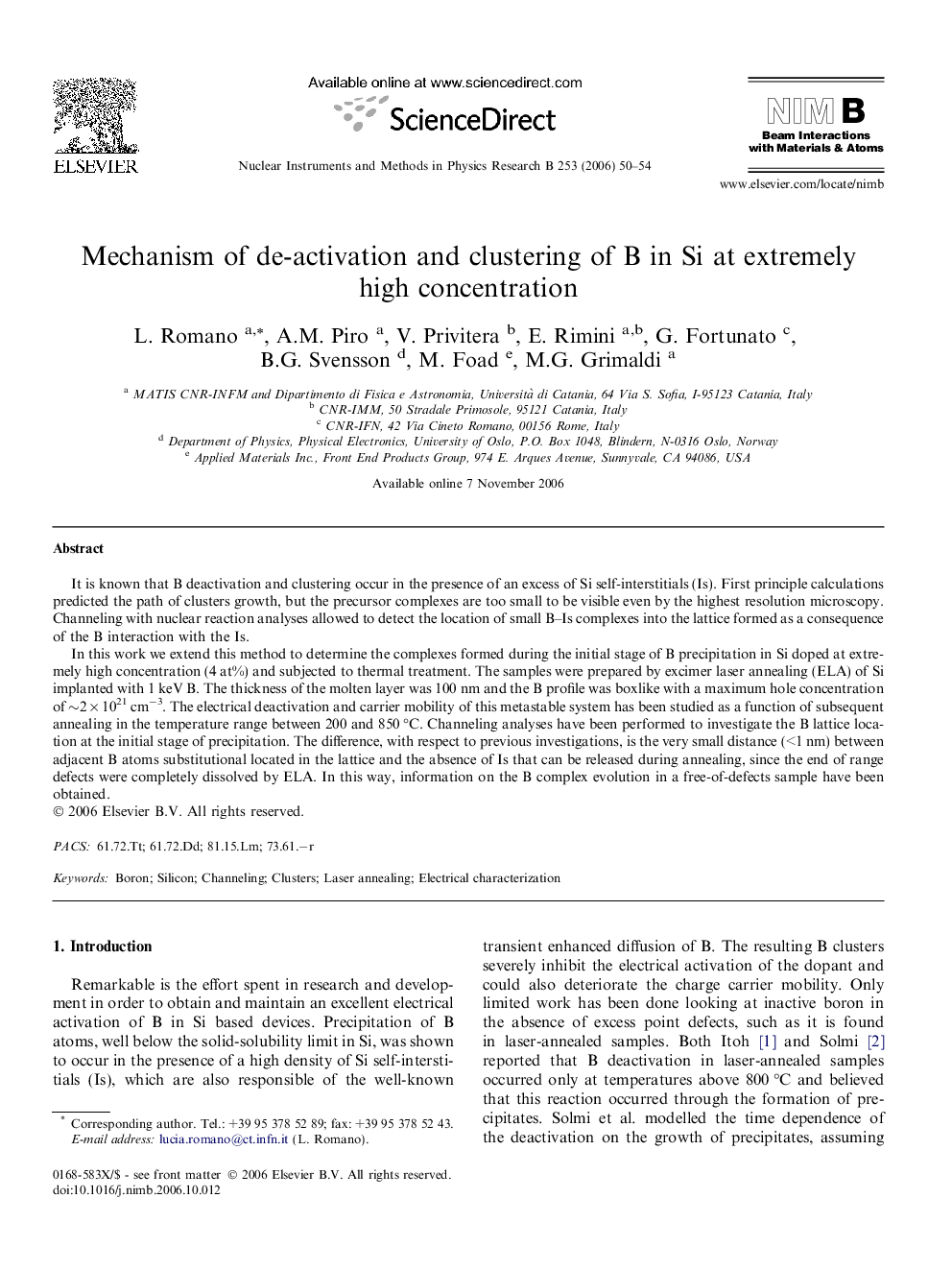| Article ID | Journal | Published Year | Pages | File Type |
|---|---|---|---|---|
| 1687921 | Nuclear Instruments and Methods in Physics Research Section B: Beam Interactions with Materials and Atoms | 2006 | 5 Pages |
It is known that B deactivation and clustering occur in the presence of an excess of Si self-interstitials (Is). First principle calculations predicted the path of clusters growth, but the precursor complexes are too small to be visible even by the highest resolution microscopy. Channeling with nuclear reaction analyses allowed to detect the location of small B–Is complexes into the lattice formed as a consequence of the B interaction with the Is.In this work we extend this method to determine the complexes formed during the initial stage of B precipitation in Si doped at extremely high concentration (4 at%) and subjected to thermal treatment. The samples were prepared by excimer laser annealing (ELA) of Si implanted with 1 keV B. The thickness of the molten layer was 100 nm and the B profile was boxlike with a maximum hole concentration of ∼2 × 1021 cm−3. The electrical deactivation and carrier mobility of this metastable system has been studied as a function of subsequent annealing in the temperature range between 200 and 850 °C. Channeling analyses have been performed to investigate the B lattice location at the initial stage of precipitation. The difference, with respect to previous investigations, is the very small distance (<1 nm) between adjacent B atoms substitutional located in the lattice and the absence of Is that can be released during annealing, since the end of range defects were completely dissolved by ELA. In this way, information on the B complex evolution in a free-of-defects sample have been obtained.
